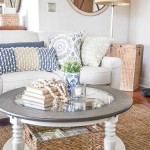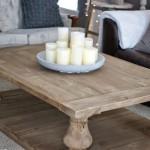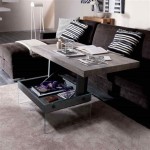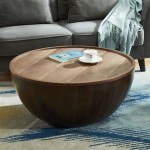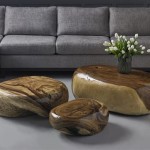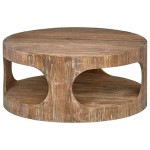Decorating With Hardwood Coffee Table Books
A hardwood coffee table is a central piece of furniture in many living rooms, offering both functionality and aesthetic appeal. It serves as a surface for drinks, remote controls, and decorative objects. Among these decorative objects, coffee table books stand out as a sophisticated and versatile choice. Selecting and arranging coffee table books on a hardwood surface requires careful consideration to complement the room's overall design and reflect the homeowner's personal taste. This article explores the art of decorating with coffee table books on hardwood, providing guidance on selection, arrangement, and integration into the existing décor.
Selecting Coffee Table Books
The initial step in decorating with coffee table books involves choosing titles that align with the room's aesthetic and the homeowner's interests. Coffee table books are available on a wide range of subjects, including art, architecture, photography, fashion, travel, and history. The selection process should consider both the content and the physical appearance of the books.
Content is paramount. Books should be chosen based on genuine interest and appreciation. A book on a subject the homeowner finds engaging will be more likely to be perused and enjoyed, adding a personal touch to the space. For example, an avid traveler might choose a book showcasing destinations around the world, while an art enthusiast might opt for a collection of works by a favorite artist. The content should spark conversation and reflect the homeowner's personality, creating a more inviting and personalized living space.
The physical appearance of the books is also a crucial factor. Consider the size, shape, color, and cover material. Hardwood coffee tables often benefit from a mix of sizes, adding visual interest. Large, oversized books can serve as focal points, while smaller, slimmer volumes can be stacked or arranged around them. Color is another important consideration. Books with covers that complement the room's color palette can enhance the overall harmony of the space. Neutral tones, such as creams, grays, and browns, tend to be versatile and can blend seamlessly with a variety of décor styles. Bold colors can be used to add pops of vibrancy and draw attention to specific areas of the coffee table. The cover material should also be considered. Linen-bound books offer a classic and sophisticated look, while books with glossy dust jackets can add a touch of modernity. A combination of different cover materials can create tactile interest and visual diversity.
Beyond individual titles, consider assembling a curated collection. A collection of books on related themes or by the same author can create a sense of cohesion and sophistication. For example, a homeowner interested in mid-century modern design might assemble a collection of books on architecture, furniture, and graphic design from that era. This shows forethought and creates a stronger design statement.
Arranging Coffee Table Books
Once the books have been selected, the next step is to arrange them artfully on the hardwood coffee table. The arrangement should be visually appealing, balanced, and functional. There are several techniques to consider when arranging coffee table books.
Stacking is a common and effective method. Stacking books of varying sizes creates visual height and dimension. Start with the largest book at the bottom and gradually decrease the size as you stack upwards. Consider placing a decorative object, such as a small sculpture, a candle, or a vase, on top of the stack to add a focal point. Stacking books vertically can also create small "platforms" to display smaller items, adding further depth and interest to the arrangement.
Grouping books is another way to create visual interest. Grouping books by color, theme, or size can create a sense of order and harmony. For example, a group of books with blue covers can be placed together to create a cohesive visual statement. Grouping books by theme, such as travel or art, can also be an effective way to showcase personal interests and create a curated look. Grouping can be used to define different zones on the table.
Creating asymmetry can bring a dynamic feel to the arrangement. While balance is important, symmetry can sometimes feel too formal or static. An asymmetrical arrangement can add a sense of energy and movement to the space. This can be achieved by offsetting stacks of books or placing objects off-center. The eye generally finds these arrangements more interesting and less predictable.
Leave some negative space on the table to prevent it from feeling cluttered. Negative space allows the eye to rest and appreciate the objects that are present. A minimalist approach can be particularly effective on a hardwood coffee table, allowing the natural beauty of the wood to shine through. Avoid overcrowding the surface with too many objects, and leave some areas of the table bare to create a sense of balance and openness.
Consider the viewing angle. The books should be arranged so that they are visually appealing from all angles, especially from the seating areas in the room. Periodically step back and assess the arrangement from different perspectives to ensure that it looks balanced and harmonious from every viewpoint. This might require some adjustments to the position or orientation of the books.
Integrating Coffee Table Books With Other Décor
The final step is to integrate the coffee table books with the other decorative elements in the room. The books should complement the existing décor and contribute to the overall aesthetic of the space. This involves considering the color palette, the style of the furniture, and the other decorative objects in the room.
Coordinate the colors of the books with the room's color scheme. Choose books with covers that complement the colors of the walls, furniture, and accessories. Using colors that are already present in the room creates a sense of cohesion and harmony. Consider using a color wheel to identify complementary colors or analogous colors that will work well together. For example, if the room features a primarily blue and gray color scheme, books with blue, gray, or white covers would be a natural fit.
Consider the style of the furniture. The style of the coffee table books should align with the style of the furniture in the room. A modern living room might benefit from sleek, minimalist books with clean lines and geometric designs. A more traditional living room might suit books with classic designs, such as leather-bound volumes or books with intricate illustrations. The overall aesthetic should be considered to have visual alignment.
Incorporate other decorative objects. Coffee table books should not be the only decorative elements on the table. Incorporate other objects, such as candles, vases, trays, and sculptures, to create a layered and visually interesting display. The objects should complement the books and enhance the overall aesthetic of the table. A small plant can add a touch of natural beauty, while a decorative tray can serve as a base for arranging smaller objects. Consider the scale and proportion of the objects to ensure that they are in harmony with the books.
Change the arrangement seasonally. Update the coffee table book display seasonally to reflect the changing seasons and holidays. During the fall, consider incorporating books with warm colors, such as oranges, reds, and browns. During the winter, consider incorporating books with festive themes, such as Christmas or Hanukkah. Changing the arrangement seasonally keeps the space fresh and interesting, and it also allows the homeowner to showcase different aspects of their personality and interests.
Regularly update the collection. Like any curated collection, the coffee table book display should be periodically updated to reflect the homeowner's evolving interests and tastes. Swap out old books for new ones, or rearrange the existing books to create a fresh new look. Updating the collection keeps the display dynamic and engaging and prevents it from becoming stale or dated. This could be adding new books that fit the same original aesthetic or completely changing the displayed theme.
Consider the function of the coffee table. While the coffee table is primarily a decorative element, it is also a functional piece of furniture. The book selection and arrangement shouldn’t hinder the table's primary use, for example setting down remotes, drinks, or plates. The display should be aesthetically pleasing yet functional, allowing for everyday use. A balance needs to be achieved.
Ultimately, decorating with coffee table books on a hardwood surface is about creating a space that is both beautiful and personal. By carefully selecting the books, arranging them thoughtfully, and integrating them with the other décor, the homeowner can create a welcoming and stylish living space that reflects their unique personality and interests.

Simple Tips For Decorating With Coffee Table Books

Decorating With Coffee Table Books Amanda Seibert

Styling An Updated Looking Coffee Table In 5 Easy Steps Stonegable

Simple Tips For Decorating With Coffee Table Books

Simple Tips For Decorating With Coffee Table Books

Simple Tips For Decorating With Coffee Table Books

Simple Tips For Decorating With Coffee Table Books

Simple Tips For Decorating With Coffee Table Books

Coffee Table Decor Ideas How To Style Your

Book Stack Centerpiece Wedding Table Display Home Decor Photo Prop Interior Design Staging Shelf Decoration Gold Loop Hardwood Base
Related Posts


